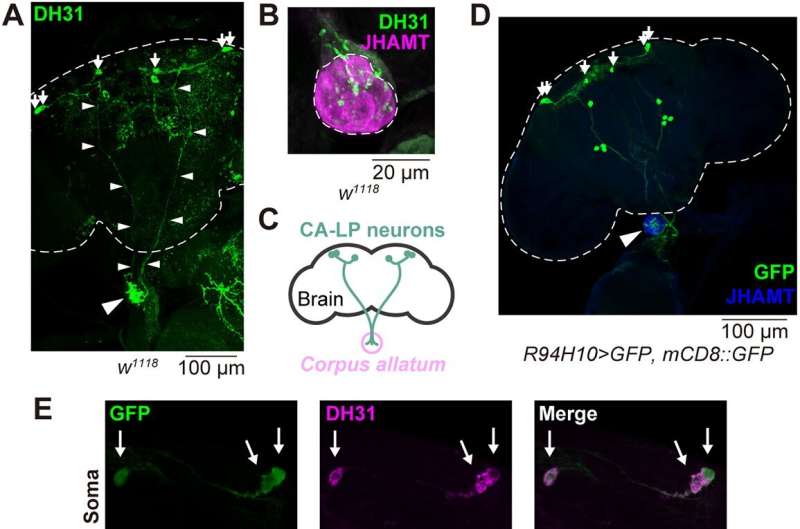This article has been reviewed according to Science X's editorial process and policies. Editors have highlighted the following attributes while ensuring the content's credibility:
fact-checked
peer-reviewed publication
trusted source
proofread
Researchers clarify neuronal function that prevents insects from producing eggs in winter

Dormancy is a survival strategy for many organisms that involves suppressing development and reproduction for a period of time to reduce energy consumption in unfavorable environments. In some insects, reproductive dormancy occurs during seasons unsuitable for reproduction due to a decrease in the amount of juvenile hormone, which is a well-known insect hormone.
Although neurons projecting from the brain to the juvenile hormone-producing organ (corpus allatum) have been known to regulate reproductive dormancy for >50 years, the specific neurosecretory factors controlling the amount of juvenile hormone have remained unclear.
Researchers used the fruit fly Drosophila melanogaster to demonstrate for the first time that the neuropeptide diuretic hormone 31 (DH31) regulates reproductive dormancy. They discovered that neurons projecting from the brain to the corpus allatum produce DH31 and that DH31 secreted by these neurons is crucial for reproductive dormancy. Additionally, they found that DH31 receptors are expressed in the corpus allatum and that receiving DH31 suppresses juvenile hormone production, inducing reproductive dormancy. The work is published in the journal Development.
Given the evidence that neurons projecting to the corpus allatum regulate reproductive dormancy in various insects and that DH31 is conserved, it is likely that DH31 controls reproductive dormancy in a broad range of insect species. Understanding the mechanisms of insect dormancy control could lead to the development of new technologies to control agricultural pests and infectious disease vectors.
More information: Yoshitomo Kurogi et al, Female reproductive dormancy in Drosophila is regulated by DH31-producing neurons projecting into the corpus allatum, Development (2023). DOI: 10.1242/dev.201186
Journal information: Development
Provided by University of Tsukuba





















